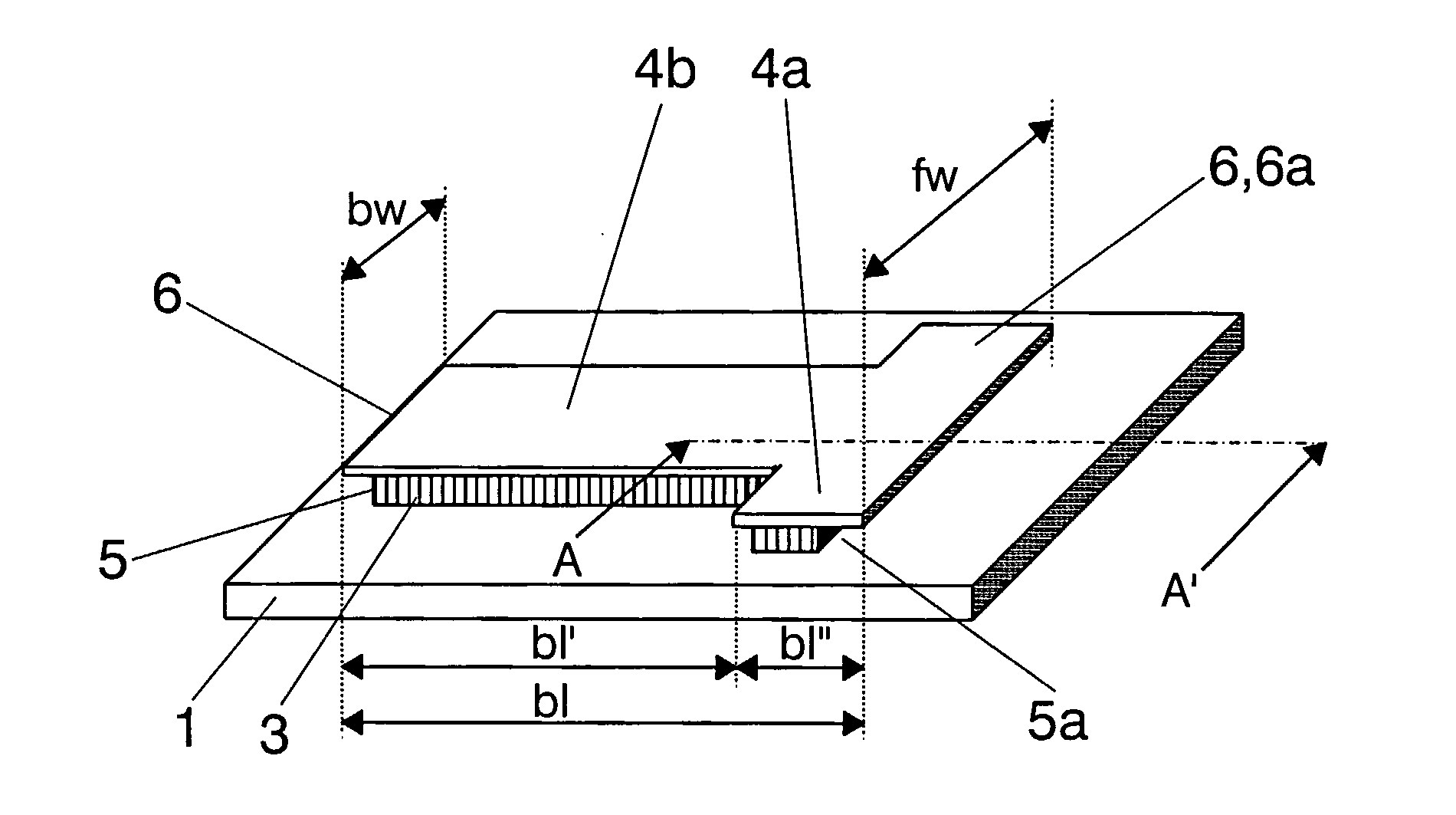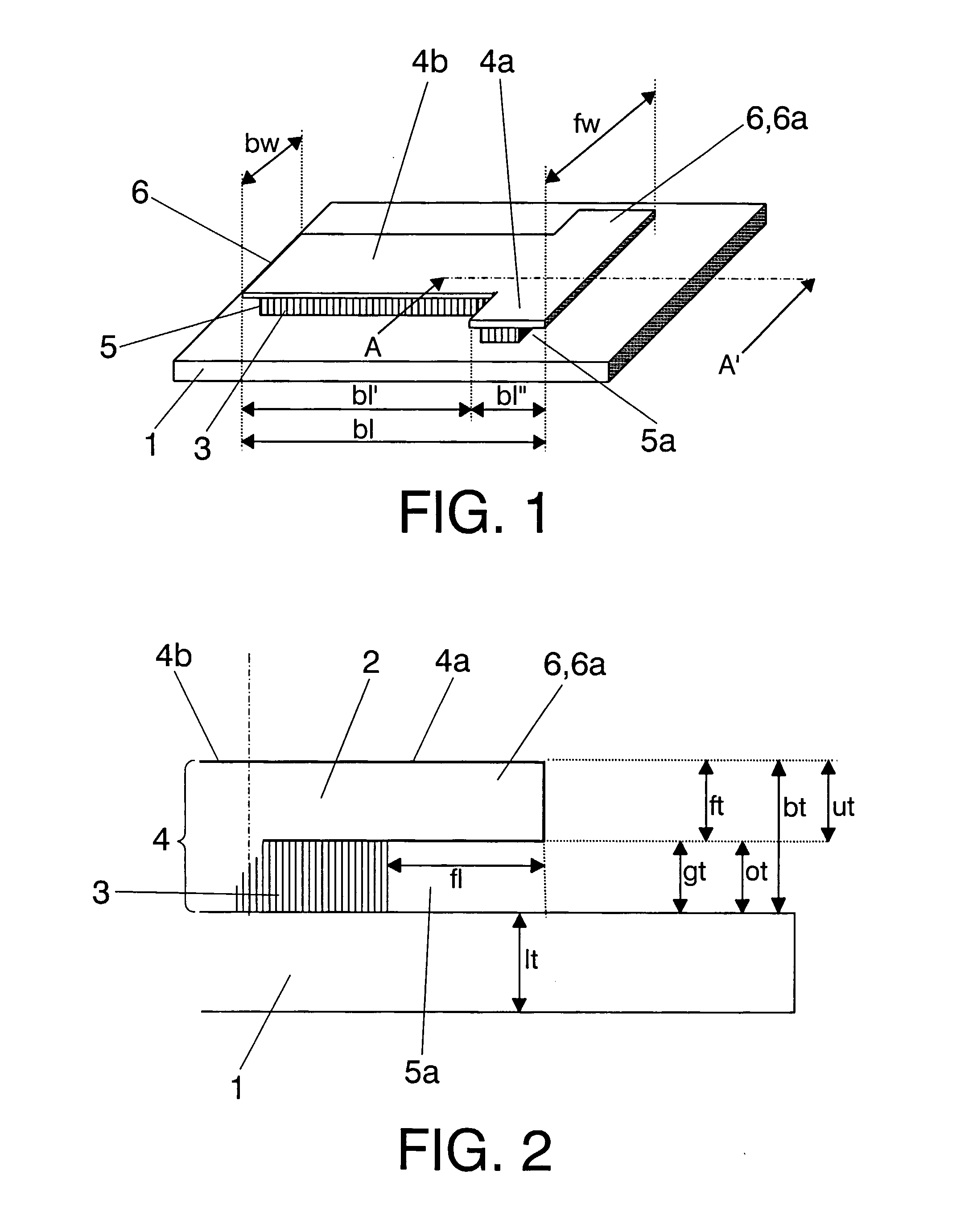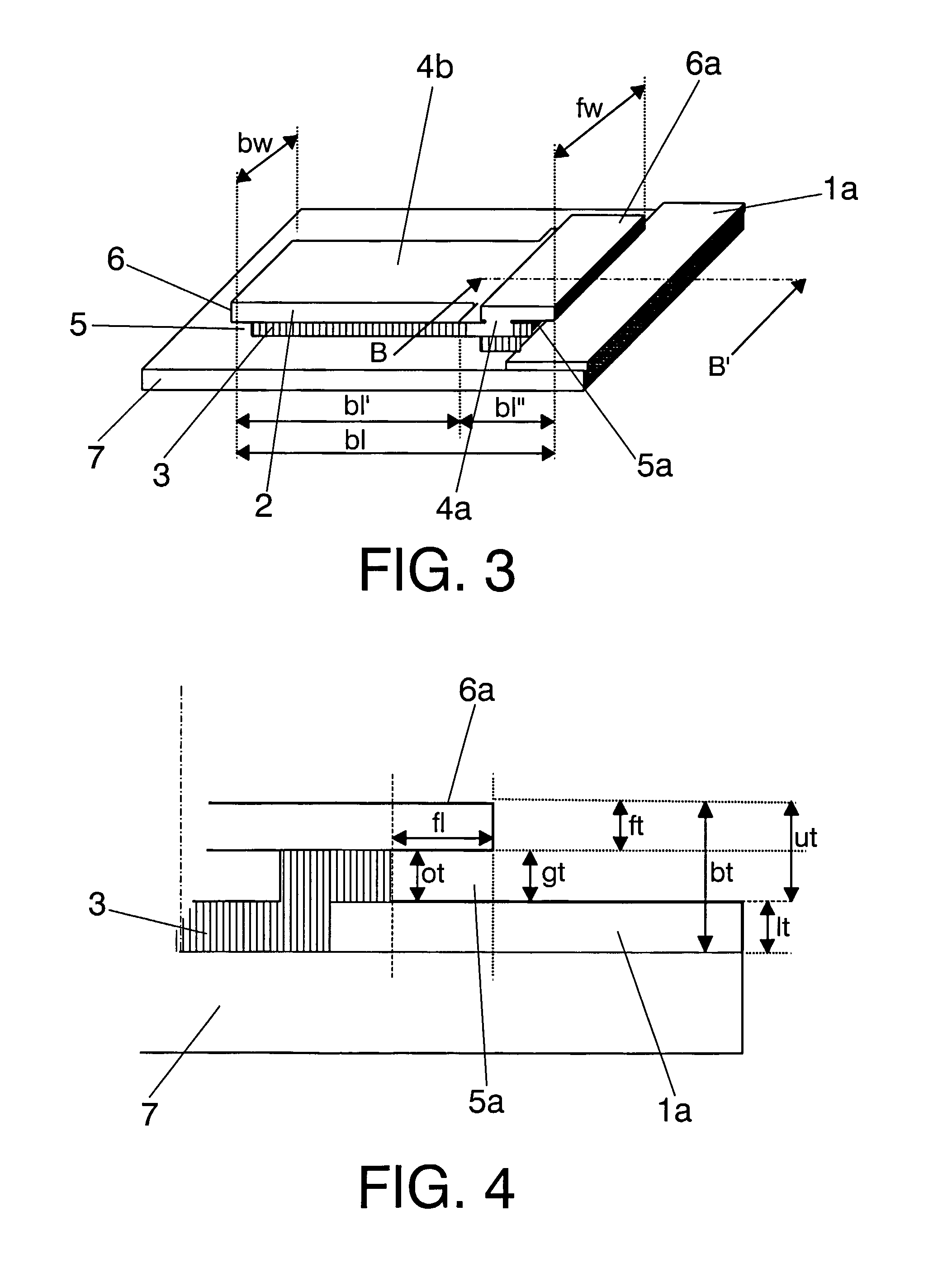Flap Type Nano/Micro Mechanical Device and Fabrication Method Thereof
a nano-micro and mechanical device technology, applied in piezoelectric/electrostrictive/magnetostrictive devices, oscillation generators, impedence networks, etc., can solve the problems of low current detection, large magnetic field, and inability to measure the motion of mechanical devices, etc., to achieve precise control of the thickness of the dielectric layer, control the effect of nanometer precision and simple and precise manner
- Summary
- Abstract
- Description
- Claims
- Application Information
AI Technical Summary
Benefits of technology
Problems solved by technology
Method used
Image
Examples
first embodiment
[0029]FIG. 1 is a lateral perspective view that schematically shows the device of the present invention in accordance with a first embodiment;
[0030]FIG. 2 is a cross sectional view along line A-A′ of the device shown in FIG. 1;
second embodiment
[0031]FIG. 3 is a lateral perspective view that schematically shows the device of the present invention in accordance with a second embodiment;
[0032]FIG. 4 is a cross sectional view along line B-B′ of the device shown in FIG. 3;
third embodiment
[0033]FIG. 5 is a lateral perspective view that schematically shows the device of the present invention in accordance with a third embodiment;
[0034]FIG. 6 is a cross sectional view along line C-C′ of the device shown in FIG. 5;
PUM
| Property | Measurement | Unit |
|---|---|---|
| width | aaaaa | aaaaa |
| length | aaaaa | aaaaa |
| thickness | aaaaa | aaaaa |
Abstract
Description
Claims
Application Information
 Login to View More
Login to View More - R&D
- Intellectual Property
- Life Sciences
- Materials
- Tech Scout
- Unparalleled Data Quality
- Higher Quality Content
- 60% Fewer Hallucinations
Browse by: Latest US Patents, China's latest patents, Technical Efficacy Thesaurus, Application Domain, Technology Topic, Popular Technical Reports.
© 2025 PatSnap. All rights reserved.Legal|Privacy policy|Modern Slavery Act Transparency Statement|Sitemap|About US| Contact US: help@patsnap.com



